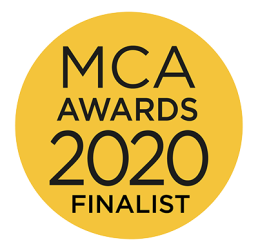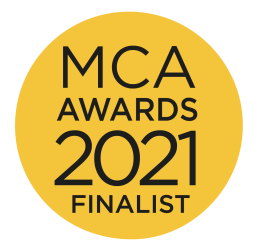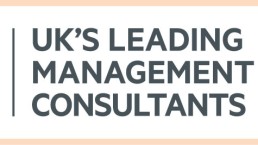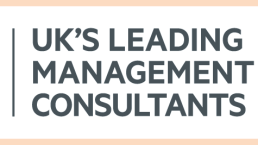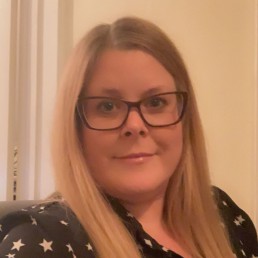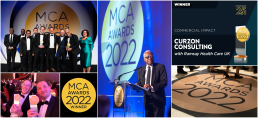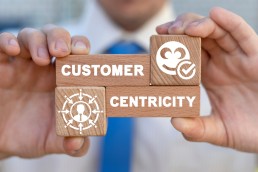Driving Strategic Impact: A Curzon Consulting Guide to Procurement Excellence
As management consultants, we help clients achieve substantial cost savings and efficiencies through procurement transformations. But truly effective transformations require surmounting common challenges like limited spend visibility and stakeholder alignment.
Based on a recent engagement delivering over £5M in savings, here are our proven tips for procurement transformation success:
Optimise spend visibility
Robust spend analysis is crucial. Categorise expenditures and pinpoint top suppliers and contracts per category. Without clean baseline data, it’s impossible to identify savings levers. Advanced analytics and mining uncover hidden insights, while stakeholder interviews provide a qualitative context.
Benchmark and identify gaps
Benchmark pricing and performance versus industry best practices to reveal overpayment. Consolidate volumes for improved leverage. Deep supply market analysis uncovers alternative vendors and guides negotiations.
Strategise and priortise
Conduct opportunity assessments to inform transformation planning. Develop tailored category-specific sourcing strategies. Model potential savings scenarios and sequence initiatives based on impact, effort, and stakeholder readiness.
Secure stakeholder alignment
Amidst change, align stakeholders through clear communication and early buy-in. Identify key decision-makers and influencers. Educate on best practices and projected bottom-line impact. Procurement must shed its tactical image and be seen as a strategic function driving millions in bottom-line impact.
Relentlessly implement
With the strategy set, focus intensely on implementation. Maintain discipline in negotiations while preserving supplier relationships. Enforce contract compliance and tail spend management.
Continuously improve
Sustaining change requires continuous improvement. Redesign operating models, policies, KPIs, training, and integrate new tech and ways of working. Build analytics to monitor savings and flag waste recurrence. Institutionalising change is the hallmark of procurement leaders.
After meeting our cost-savings goals, we leveraged our award-winning assessment framework to ensure the procurement organisation’s long-term success. Our framework evaluates Procurement across five dimensions: People, Strategy, Systems, Governance, and Management. This data-driven approach identified gaps and enabled us to strategise implementing best practices. Ultimately, these steps addressed challenges, so the procurement organisation can expand its influence and be viewed as a strategic partner across all business units.
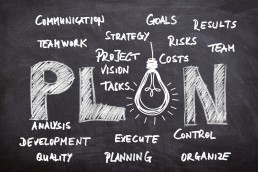
In conclusion
As trusted consultants, we overcome inertia and silos to deliver rapid yet lasting transformation. With deep expertise and cross-industry perspective, we objectively assess opportunities, align stakeholders, and implement best practices. The result is simplified sourcing, lower costs, reduced risks, increased efficiency, and strategic impact.
Let us conduct an initial diagnostic for your procurement organisation. We will benchmark performance, identify savings levers, and provide a roadmap to deliver value.
CONTACT US TO FIND OUT HOW WE CAN HELP
Preetesh Sood

Consultant
Preetesh is a management consultant and technology expert with over 6 years of experience driving digital transformation and innovation initiatives at global corporations. He began his career at Cisco Systems, where he managed the development and delivery of smart manufacturing solutions. By spearheading the global synchronisation of smart manufacturing platforms, Preetesh enabled significant cost savings through operational efficiency.
Most recently, Preetesh worked as a consultant supporting executive leadership across industries, including technology, financial services, and not-for-profit. He led market research, performed statistical analyses, and identified strategic partnerships to enable successful market entry strategies. Preetesh also created valuation models for sustainable investment products and supported the development of go-to-market plans.
With an MBA from the University of Manchester, and a Bachelor’s in Computer Science Engineering, Preetesh brings a data-driven yet pragmatic approach to consulting projects. He leverages his expertise in data analytics, machine learning and technology to drive organisational transformation and inform executive decisions. Preetesh is passionate about innovation and holds certifications in leadership and communication. In his free time, Preetesh enjoys reading on current geo-political affairs, and watching Formula 1 and cricket.
CONTACT US TO FIND OUT HOW WE CAN HELP
UK’s Leading Management Consultants 2023
We are delighted to have been recognised for the sixth consecutive year as one of the ‘UK’s Leading Management Consultants 2023’ by the Financial Times.
Recommended across 8 categories and with a Gold Award for the 2nd consecutive year, the annual rating, compiled with data company Statista is based on endorsements by clients and peers. It demonstrates our consistent year-on-year sector and service line growth.
Consulting companies are awarded Bronze (recommended), Silver (frequently recommended) or Gold (very frequently recommended).
Sectoral expertise
- Construction & Infrastructure – Gold
- Healthcare – Silver
- Financial Services – Bronze
- Public & Social Sector – Bronze
Consulting services
- Digital Transformation – Silver
- Operations & Supply Chain – Silver
- Strategy – Silver
- Sustainability – Silver
Managing Partner Andrew Morgan said
We are absolutely delighted to see the continued and consistent progression of Curzon. I am so proud of the team, as this emphasises their commitment and dedication to deliver sustainable, tangible results for our clients through strategic, operational and transformation delivery.

CONTACT US TO FIND OUT HOW WE CAN HELP
2022 MCA Awards Winners
We are so very proud to announce #CurzonConsulting, has won the Commercial Impact #mcaawards 2022 award, with #RamsayHeathCare. Representing the very best of our consulting business, it’s such an incredible achievement to be recognised for our Procurement Transformation Programme. The judges said this was a team that: “brought specific expertise to a problem and rebuilt the procurement capability at speed, changing hearts and minds in the organisation.”
Established by the Management Consultancies Association, the representative body for the UK’s leading management consulting firms, the #MCAAwards demonstrate the transformational work the sector has undertaken during the last challenging twelve months.
The remarkable achievement marks the eight consecutive years that Curzon Consulting has been a finalist at these prestigious awards.
Commercial Impact: Procurement Transformation Programme with Ramsay Health Care UK
Ramsay Group operates a global network of 530+ healthcare facilities across 11 countries.
The pandemic exposed an over-reliance on a ‘single’ income source. With all elective activity (e.g., joint replacements, cataracts), the primary income source, halted overnight, but a high fixed cost base remained.
As a response, Ramsay UK embarked on an ambitious growth & efficiency programme. Curzon was engaged to design and deliver a Procurement Transformation programme.
Over 9 months, we took a pragmatic, agile and “together” approach to accelerate benefit delivery, particularly in high spend / high complex clinical spend categories.
By assessing the existing PO against a methodical and objective review against 8 dimensions we highlighted several data-driven insights; fundamentally, the PO only managed 44% of total spend; hence lack of PO involvement resulted in suboptimal category /supplier management and savings delivery.
Improvement opportunities were incorporated into the design of the new Procurement Organisation.
Our methodology was specifically adapted to address demand-side cost optimisation levers.
Through a deep dive into orthopaedics, a key benefit delivered in Orthopaedics came from ensuring the Surgeon selected the appropriate implant system (metal or ceramic) to match the patient’s profile (e.g., age, gender).
A well-established norm in Orthopaedics is to routinely implant, high quality, lower-cost metal vs. ceramic hip systems into >70-year-old patients. Our analysis showed Surgeons at Ramsay UK implanted costly ceramic hip systems in 33% of >70-year-old NHS patients. The NHS reimbursement for a complete hip replacement is fixed, so every incremental switch from ceramic to metal impacted the bottom line.
Surgeons had little comprehension of how their hip selection decisions impacted Ramsay UK’s profitability. Our insights directly influenced the Orthopaedic Steering Group’s new policy which required Surgeons to utilise lower-cost metal hip systems in older NHS patients.
Curzon established an open, trusted, and collaborative way of working with the Ramsay team, and by adopting a “one team” approach with the PO we ensured everyone involved with the procurement transformation owned the outcome and maximised the benefits from knowledge transfer during Wave 1.
Fundamentally a key part of the relationship was to ensure recommendations on cost improvement would not compromise clinical outcomes and patient satisfaction.
Wave 1 has delivered £multi-millions in incremental annualised savings. In addition, the savings have translated into several £100 million worth of shareholder value.
Commenting on the success – Ramsay Health’s CFO Peter Allen said:
“Curzon helped us obtain the confidence and operational ‘can-do’ to drive incremental savings sooner than we could have expected, and then to push on to best practice performance.
Their skill was in balancing pace of change and the results imperative with the need to take the organisation with them on the journey. A key achievement was building the necessary collaboration between the many functions that needed to act together to drive benefits in complex clinical spend categories.
Curzon’s strong analytical expertise, and ability help us to take a critical view on the “art of the possible” and bring the team along on the journey to demonstrate benefits delivery was a critical success factor.
The result was a tangible and ongoing commercial win, and a new Procurement Organisation to drive cost leadership, profitability and sustainability going forward”
A massive congratulations to the Curzon Consulting team and Ramsay Health Care UK and the other finalists.
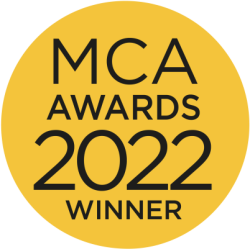
CONTACT US TO FIND OUT HOW WE CAN HELP
Catherine Fleming
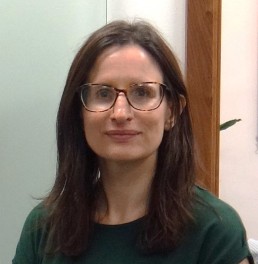
Head of People
+44 (0)1653 628596
Catherine has held multiple roles within the people profession and in various industries ranging from IT to recruitment and fire safety. Before moving into HR, she had a career in general management where she managed commercial sales, operations and coached and mentored large teams. Her background has helped inform and shape her approach to human resources and she is passionate about doing HR differently and creating the right environment where people and therefore companies, can flourish.
Key strength areas include talent acquisition, employee engagement and performance management with each element being very much driven by a focus to create a great experience.
CONTACT US TO FIND OUT HOW WE CAN HELP
Amber-Valetta Nunes
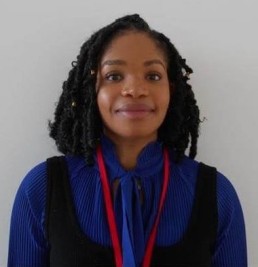
Consultant
+44 (0)1653 628596
Amber-Valetta is a consultant with 2 years’ experience in consulting split between design and management consulting.; her experience lies in the defense and manufacturing sectors. Having worked extensively on cutting-edge technologies Amber-Valetta has expertise in data analysis, continuous improvement activities and health and safety.
Amber-Valetta has a Master of Engineering (MEng) in Chemical Engineering from the University of Surrey where she also undertook a placement year in a global pharmaceutical company. She has a passion for sustainability and since graduating Amber-Valetta has also completed a postgraduate certification (PGCert) in the principles of Hydrogen Safety and Hydrogen Safety Technologies.
She uses her technical and creative skills to design and implement new and exciting solutions for the multi-faceted challenges that arise across the various sectors in the consulting industry.
CONTACT US TO FIND OUT HOW WE CAN HELP
CIPS Awards Winners
Last night at the CIPS Excellence in Procurement Awards, we won “Best Procurement Consultancy Project of the Year” for our collaboration with Ramsay Health Care UK.
Congratulations to both teams!
Procurement Transformation Programme with Ramsay Health Care UK
As a pandemic response, Ramsay UK embarked on an ambitious growth & efficiency programme. Curzon designed and delivered a substantial cost reduction and Procurement Transformation programme.
Over 9 months, we defined a pragmatic and agile approach to implementing a best-in-class procurement organisation with an increased mandate, able to accelerate benefit delivery, and manage high spend / high complex clinical spend categories.
We helped Ramsay UK to deliver £multi-millions in incremental annualised savings. In addition, the savings have translated into several £100 million worth of shareholder value.
View the full case here – https://www.curzonconsulting.com/procurement-consultancy-project-of-the-year-ramsay-healthcare/

CONTACT US TO FIND OUT HOW WE CAN HELP
Driving market focused resource allocation decisions
The issue
- A business unit of a global speciality chemicals producer supplying catalysts for industrial applications to multiple markets across all geographies
- Capacity constrained and being challenged to improve overall business profitability
- Shared manufacturing assets serving multiple market-facing business units
- Upcoming regulatory changes required product recipe changes with implications on the existing production process
- Limited attempts to address supply constraints in an effective manner, with over-stated demand and poor sales & operations planning disciplines
Solution
- Establish & exploit true production capacity of existing assets:
- Identification and elimination of bottlenecks in supply chain & productions
- Drive for OEE in existing plant (batch size & sequencing, down time & maintenance etc.)
- Identify options to reallocate capacity use to more profitable customers
- Identification of customers & volumes yielding below average contribution allowing for either renegotiation or re-allocation
- Establish cross-market segment view of long-term demand
- Markets & functions created fact base & presented in facilitated cross functional sessions to build cross markets view & build priorities for overall business
- Revamped S&OP including product profitability of prospect pipeline to ensure capacity is utilised for highest financial returns

The results
- CAPEX spend avoidance of £18m with extrapolated implications to the whole division of c. £100m
- Improved joint-management understanding on the levers of capacity & profitability, supported by a cross-market decision making governance process to make data based trade-offs
- Increased production capacity through de-bottlenecking (e.g. batch sequence & maintenance optimisation) with potential resulting contribution uplift of ~ £ 10m p.a.
- 235 tonnes of unlocked capacity through selective elimination of low margin product variants and Sales re-alignment
An award-winning team
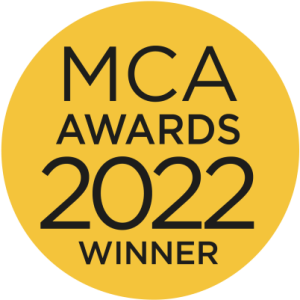
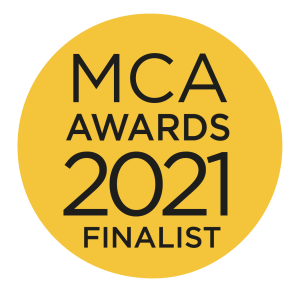
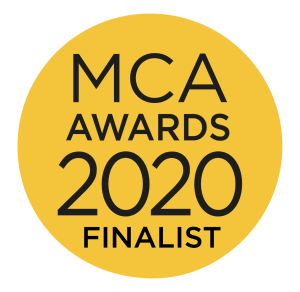
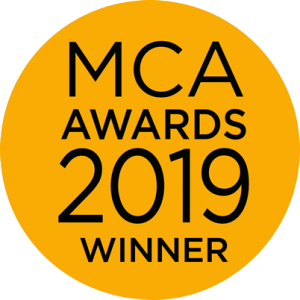
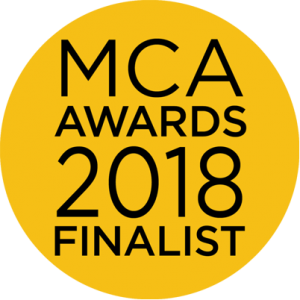

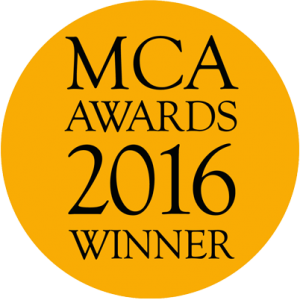
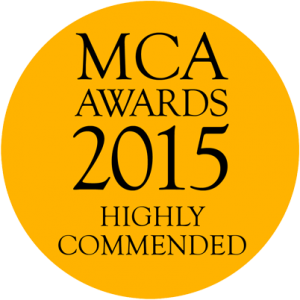
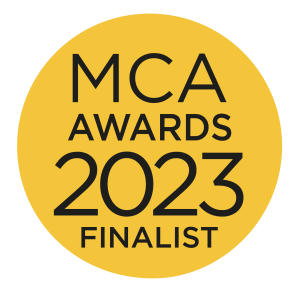

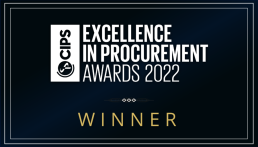
CONTACT US TO FIND OUT HOW WE CAN HELP
Framing the requirements for developing a customer-centric approach and service model
The issue
- With a re-focusing of the organization on energy transition and a strategic objective to grow B2C Mobility and Convenience revenue streams, the current, largely B2B, customer care service model was increasingly being asked to meet needs beyond core capabilities and capacity, putting a strain on service and cost to serve
- With limitations on internal capability, business units have chosen to outsource services, leading to a proliferation of suppliers, models and customer experiences
- No cohesive corporate narrative of the customer promise exists and the internal focus was on fixing service failings to reduce the noise within the organisation
- The need for a future-proof operating model that is aligned to the projected steep growth in the B2C customer base was recognized
- Gaining an appreciation of leading external practices in customer care delivery was considered an essential input to framing the right future state operating model
Solution
- Current state assessment of customer care and customer centricity capabilities against a set of standard dimensions to establish current maturity and points of commonality or difference across business groups
- Established current state maturity of each business against an industry reference benchmark
- Developed design criteria to frame a future operating model and as a reference against which to benchmark external leading practices
- Undertook competitor and cross-sector benchmarking to identify areas of Customer Care differentiation, including desktop research, expert input and interviews with Customer leaders within major organisations (both B2B and B2C).
- Defined the priority levers to drive improved customer-centricity and articulated the linkages between the dimensions
- Developed an initial roadmap to outline how the Customer Care capability should evolve
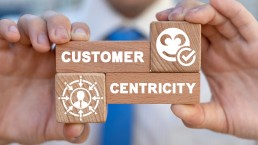
The results
- Mobilised the senior stakeholders to want to move beyond fixing performance failings in Customer Care to evolving a business-wide Customer-centric operating model
- Delivered a customer centric maturity assessment across three representative businesses against a series of capability levers
- Multi-industry, international benchmarking exercise, highlighting customer-centricity maturity and leading practices
- Identification of priority levers to increase customer centricity maturity and approach options to achieve a viable system model
- Development of a roadmap to move beyond operational fixes to a strategically customer centric approach
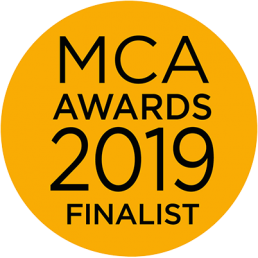
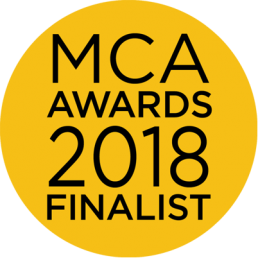

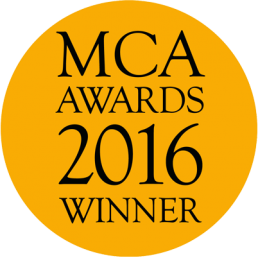

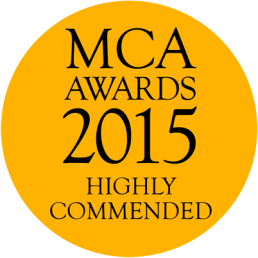
CONTACT US TO FIND OUT HOW WE CAN HELP
Designing and deciding digital CX route-map & the priority omnichannel service investment to realise it
The issue
-
Having delivered the ‘brilliant basics’ part of a CX transformation programme, the bank needed to define a digital CX design to deliver a signature, differentiating experience
-
A pressure point was that customers’ expectations of doing their banking anywhere/ anytime/on any device were growing, and the ground had been lost on this to digital challenger banks
-
The bank was also in sharp cost control mode so it was critical that digital CX investment choices were well evidenced, validated and focussed
-
We had to answer the question: where and how to prioritise omnichannel service investment to deliver a competitive digital CX?
-
With many competing candidates for digitising customer service across the existing product portfolio, we had to be clear about what omnichannel improvements would realise greatest value from a CX and commercial perspective
What we did
-
Reviewed draft digital strategy and developed investment prioritisation criteria to focus CX and omnichannel service design choices
-
Defined design principles to guide the development of Omnichannel capability
-
Competitor and cross-sector benchmarking to identify key areas of digital CX differentiation
-
Evaluated and ranked CX/service design options against agreed prioritisation criteria and ability to leverage existing IT capability and technology roadmap
-
Flesh-out of to-be CX/service design with benefit cases supporting the investment priorities identified
-
Produced and validated a sequenced digital CX/omnichannel implementation route map

The results
-
Delivered new digital CX/omnichannel design with 10 key touchpoint changes, each with benefits ranging from £3.5M to £9M annually in a fully realised state
-
Pragmatic, phased change route map adopted, which drove early cost savings and new customer acquisition uplift by addressing highest priority CX pain points, allowing subsidisation of next phases
-
80% of the technology capabilities required to deliver the route map were covered by leverage of existing or planned future (and already budgeted) technology assets and upgrades





